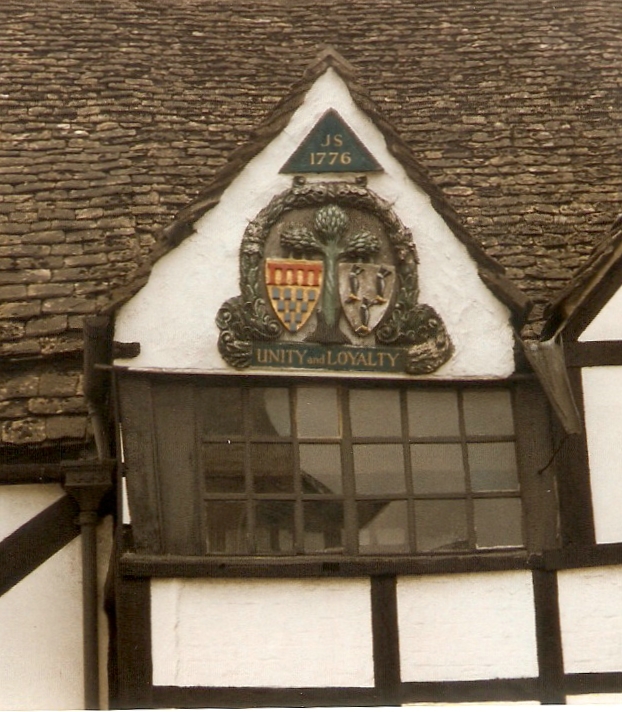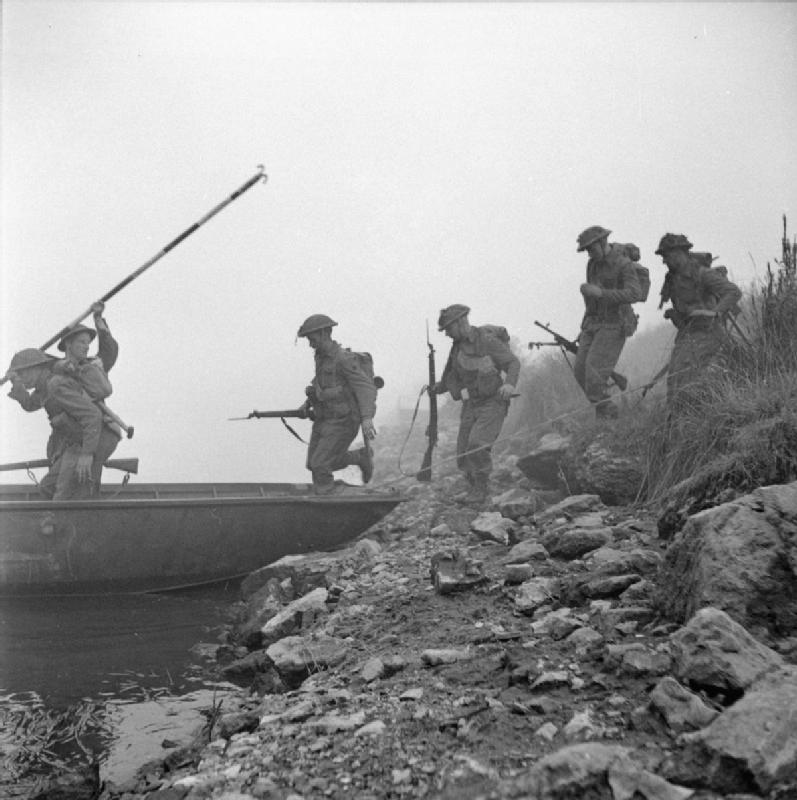|
Yelde Hall
The Yelde Hall is a public facility in the Market Place, in Chippenham, Wiltshire, England. The building, which was the meeting place of Chippenham Borough Council, is a Grade I listed building. History The building was built in around 1450. The design involved an asymmetrical main frontage facing onto the Market Place with the right hand section projected forward; the right hand section, which consisted of two bays, featured a short flight of steps leading up to a doorway in the left bay with a horizontal window above the doorway and two small gables above that. The left hand gable contained a carving of the town arms with the inscription "JS 1776": the initials refer to John Scott who was the bailiff at that time. The right hand gable at one time contained a clock which was taken down in 1851. The building was originally used as a jail (in the cellar), as a courtroom (on the ground floor) and as a council chamber (upstairs). The Chippenham Savings Bank operated an office in ... [...More Info...] [...Related Items...] OR: [Wikipedia] [Google] [Baidu] |
Chippenham
Chippenham is a market town in northwest Wiltshire, England. It lies northeast of Bath, west of London, and is near the Cotswolds Area of Natural Beauty. The town was established on a crossing of the River Avon and some form of settlement is believed to have existed there since before Roman times. It was a royal vill, and probably a royal hunting lodge, under Alfred the Great. The town continued to grow when the Great Western Railway arrived in 1841. The town had a population of 36,548 in 2021. Geography Location Chippenham is in western Wiltshire, at a prominent crossing of the River Avon, between the Marlborough Downs to the east, the southern Cotswolds to the north and west and Salisbury Plain to the southeast. The town is surrounded by sparsely populated countryside and there are several woodlands in or very near the town, such as Bird's Marsh, Vincients Wood and Briars Wood. Suburbs Suburbs include Cepen Park (North & South), Hardenhuish, Monkton, Lowden, Pewsham ... [...More Info...] [...Related Items...] OR: [Wikipedia] [Google] [Baidu] |
Medieval Architecture
Medieval architecture is architecture common in the Middle Ages, and includes religious, civil, and military buildings. Styles include pre-Romanesque, Romanesque, and Gothic. While most of the surviving medieval architecture is to be seen in churches and castles, examples of civic and domestic architecture can be found throughout Europe, in manor houses, town halls, almshouses, bridges, and residential houses. Designs Religious architecture The Latin cross plan, common in medieval ecclesiastical architecture, takes the Roman basilica as its primary model with subsequent developments. It consists of a nave, transepts, and the altar stands at the east end (see ''Cathedral diagram''). Also, cathedrals influenced or commissioned by Justinian employed the Byzantine style of domes and a Greek cross (resembling a plus sign), with the altar located in the sanctuary on the east side of the church. Military architecture Surviving examples of medieval secular architecture mai ... [...More Info...] [...Related Items...] OR: [Wikipedia] [Google] [Baidu] |
Wiltshire
Wiltshire (; abbreviated Wilts) is a historic and ceremonial county in South West England with an area of . It is landlocked and borders the counties of Dorset to the southwest, Somerset to the west, Hampshire to the southeast, Gloucestershire to the north, Oxfordshire to the northeast and Berkshire to the east. The county town was originally Wilton, after which the county is named, but Wiltshire Council is now based in the county town of Trowbridge. Within the county's boundary are two unitary authority areas, Wiltshire and Swindon, governed respectively by Wiltshire Council and Swindon Borough Council. Wiltshire is characterised by its high downland and wide valleys. Salisbury Plain is noted for being the location of the Stonehenge and Avebury stone circles (which together are a UNESCO Cultural and World Heritage site) and other ancient landmarks, and as a training area for the British Army. The city of Salisbury is notable for its medieval cathedral. Swindon is ... [...More Info...] [...Related Items...] OR: [Wikipedia] [Google] [Baidu] |
Listed Building
In the United Kingdom, a listed building or listed structure is one that has been placed on one of the four statutory lists maintained by Historic England in England, Historic Environment Scotland in Scotland, in Wales, and the Northern Ireland Environment Agency in Northern Ireland. The term has also been used in the Republic of Ireland, where buildings are protected under the Planning and Development Act 2000. The statutory term in Ireland is " protected structure". A listed building may not be demolished, extended, or altered without special permission from the local planning authority, which typically consults the relevant central government agency, particularly for significant alterations to the more notable listed buildings. In England and Wales, a national amenity society must be notified of any work to a listed building which involves any element of demolition. Exemption from secular listed building control is provided for some buildings in current use for worship, ... [...More Info...] [...Related Items...] OR: [Wikipedia] [Google] [Baidu] |
Bailiff
A bailiff (from Middle English baillif, Old French ''baillis'', ''bail'' "custody") is a manager, overseer or custodian – a legal officer to whom some degree of authority or jurisdiction is given. Bailiffs are of various kinds and their offices and duties vary greatly. Another official sometimes referred to as a ''bailiff'' was the '' Vogt''. In the Holy Roman Empire a similar function was performed by the ''Amtmann''. British Isles Historic bailiffs ''Bailiff'' was the term used by the Normans for what the Saxons had called a '' reeve'': the officer responsible for executing the decisions of a court. The duty of the bailiff would thus include serving summonses and orders, and executing all warrants issued out of the corresponding court. The district within which the bailiff operated was called his ''bailiwick'', even to the present day. Bailiffs were outsiders and free men, that is, they were not usually from the bailiwick for which they were responsible. Througho ... [...More Info...] [...Related Items...] OR: [Wikipedia] [Google] [Baidu] |
Burgess (title)
Burgess was a British title used in the medieval and early modern period to designate someone of the Burgher class. It originally meant a freeman of a borough or burgh but later coming to mean an official of a municipality or a representative in the House of Commons. Usage in England In England, burgess meant an elected or unelected official of a municipality, or the representative of a borough in the English House of Commons. This usage of "burgess" has since disappeared. Burgesses as freemen had the sole right to vote in municipal or parliamentary elections. However, these political privileges in Britain were removed by the Reform Act in 1832. Usage in Scotland Burgesses were originally freeman inhabitants of a city where they owned land and who contributed to the running of the town and its taxation. The title of ''burgess'' was later restricted to merchants and craftsmen, so that only burgesses could enjoy the privileges of trading or practising a craft in the ci ... [...More Info...] [...Related Items...] OR: [Wikipedia] [Google] [Baidu] |
Chippenham Town Hall
Chippenham Town Hall is a 19th-century municipal building in the High Street, Chippenham, Wiltshire, England. The town hall, which was the headquarters of Chippenham Borough Council, is a Grade II listed building. History After significant population growth, largely associated with the cloth trade, Chippenham became a municipal borough in 1835. In this context, civic leaders decided to accept the offer of the local member of parliament, Joseph Neeld, who had recently bought the nearby Grittleton House estate, to pay for a new town hall to replace the ageing Yelde Hall in the Market Place. The site they selected had been occupied by a public house, The Cannon Inn. The new building was designed by James Thomson in the neoclassical style, built in ashlar stone at a cost of £12,000 and completed in 1834. The design involved an asymmetrical main frontage with four bays facing onto the High Street with the right hand bay projected forward; the left hand section featured a loggia of ... [...More Info...] [...Related Items...] OR: [Wikipedia] [Google] [Baidu] |
Wiltshire Regiment
The Wiltshire Regiment was a line infantry regiment of the British Army, formed in 1881 under the Childers Reforms by the amalgamation of the 62nd (Wiltshire) Regiment of Foot and the 99th Duke of Edinburgh's (Lanarkshire) Regiment of Foot. The regiment was originally formed as the Duke of Edinburgh's (Wiltshire Regiment), taking the county affiliation from the 62nd Foot (which became the 1st Battalion) and the honorific from the 99th Foot (which became the 2nd Battalion). In 1921, the titles switched to become the Wiltshire Regiment (Duke of Edinburgh's). After service in both the First and Second World Wars, it was amalgamated with the Royal Berkshire Regiment (Princess Charlotte of Wales's) into the Duke of Edinburgh's Royal Regiment (Berkshire and Wiltshire) in 1959, which was, in 1994, merged with the Gloucestershire Regiment to form the Royal Gloucestershire, Berkshire and Wiltshire Regiment, which later amalgamated with the Devonshire and Dorset Regiment, the Royal Gre ... [...More Info...] [...Related Items...] OR: [Wikipedia] [Google] [Baidu] |
Royal Wiltshire Yeomanry
The Royal Wiltshire Yeomanry (RWY) was a Yeomanry regiment of the Kingdom of Great Britain and the United Kingdom established in 1794. It was disbanded as an independent Army Reserve (United Kingdom), Territorial Army unit in 1967, a time when the strength of the Territorial Army was greatly reduced. The regiment lives on in B (Royal Wiltshire Yeomanry) and Y (Royal Wiltshire Yeomanry) Squadron (army), Squadrons of the Royal Wessex Yeomanry. The regiment took part in the Second Boer War as part of the Imperial Yeomanry. In the World War I, First World War, it fought on the Western Front (World War I), Western Front, but saw relatively little action as horsed cavalry. After conversion to infantry, it fought in the Trench warfare, trenches, notably during 3rd Ypres in 1917 and during the German spring offensive in 1918. In the World War II, Second World War, the regiment Mediterranean and Middle East theatre of World War II, fought in the Middle East, seeing action Syria–Lebanon ... [...More Info...] [...Related Items...] OR: [Wikipedia] [Google] [Baidu] |
Trowbridge
Trowbridge ( ) is the county town of Wiltshire, England, on the River Biss in the west of the county. It is near the border with Somerset and lies southeast of Bath, 31 miles (49 km) southwest of Swindon and 20 miles (32 km) southeast of Bristol. The town had a population of 37,169 in 2021. Long a market town, the Kennet and Avon canal to the north of Trowbridge played an instrumental part in the town's development as it allowed coal to be transported from the Somerset Coalfield and so marked the advent of steam-powered manufacturing in woollen cloth mills. The town was the foremost producer of this mainstay of contemporary clothing and blankets in south west England in the late 18th and early 19th centuries, by which time it held the nickname "The Manchester of the West". The civil parish of Trowbridge had a population of 33,108 at the 2011 census. The parish encompasses the settlements of Longfield, Lower Studley, Upper Studley, Studley Green and Trowle Common. H ... [...More Info...] [...Related Items...] OR: [Wikipedia] [Google] [Baidu] |
Gazette And Herald
The ''Gazette and Herald'' is a local weekly paid-for newspaper, established in Wiltshire, England, in 1816 and published every Thursday. It serves the areas and communities of Devizes, Calne, Chippenham, Wootton Bassett, Swindon, Marlborough, Malmesbury, Corsham, Box and other areas in North Wiltshire. ''gazetteandherald.co.uk'' accessed 11 December 2006 Originally the ''Devizes and Wiltshire Gazette'', the paper expanded and took over many smaller titles. Historical copies of the ''Devizes and Wiltshire Gazette'', dating back to 1822, are available to search and view in digitised form at The . [...More Info...] [...Related Items...] OR: [Wikipedia] [Google] [Baidu] |





